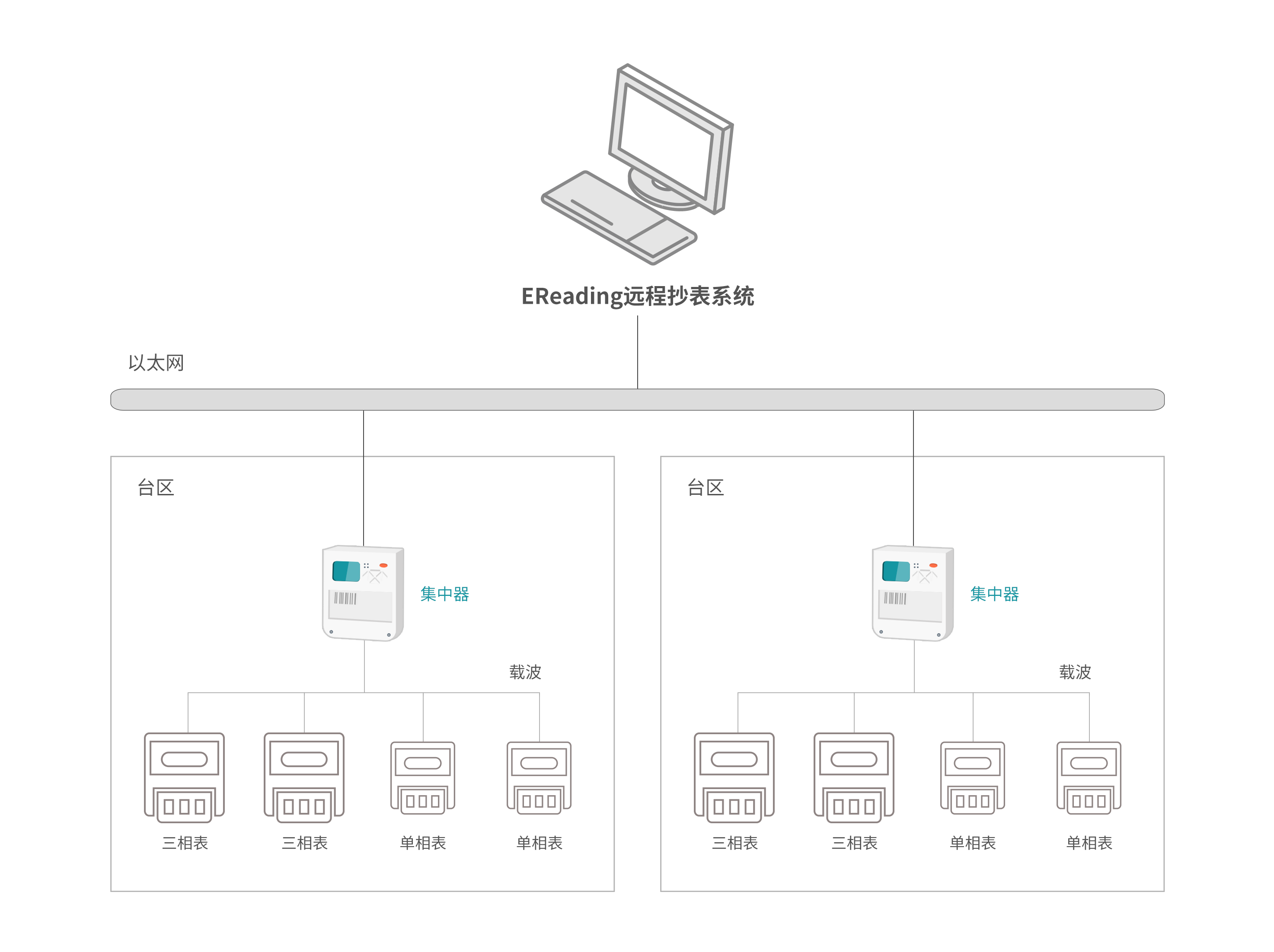The FReading Remote Meter Reading System is an automated centralized electricity meter reading solution designed for residential communities, factories, logistics parks, shopping malls, and urban complexes. Utilizing modern communication technologies, it enables remote data reading and control of meters and concentrators.
Logistics parks
Schools
Commercial centers
Industrial enterprises
Labor Cost Reduction
Enables remote meter reading, significantly reducing manual workload and labor costs.
Fully Automated Remote Switching
Supports smart remote power control with real-time or scheduled disconnection and reconnection, saving time and effort.
Automatic Payment Reminders
The system automatically sends balance warnings and initiates power disconnection upon non-payment—eliminating the need for manual collection.

System Architecture Diagram
The system consists of three layers: the master station, concentrators, and PLC (Power Line Carrier) energy meters.
The master station collects and processes user electricity consumption data transmitted from concentrators and provides it to the power management system.
Installed near 380V distribution transformers or at sites with three-phase meters, the concentrator serves as the system‘s core layer. It communicates upward with the master station via GPRS/CDMA/4G or local area networks.
Installed at end-user points, these meters measure electricity usage and transmit data upward to the concentrators via low-voltage power line communication (PLC).
In scenarios where meters are widely distributed, low-voltage PLC solutions can be used to complete remote meter reading upgrades.
Archive Management:
Line management, transformer zone management, meter grouping, totalization groups, gateway meter maintenance, SIM card management.
Terminal Parameter Management:
Parameter settings for concentrators, meter archives, key meter management, and batch parameter management.
Load Control Management:
Remote trip/close operations, prepayment control, and power threshold settings.
System Maintenance:
Includes task scheduling, template management, system logs, terminal operation logs, access logs, and detailed logs.
Collection Task Management:
Automatic and manual collection task scheduling.
Data Analysis:
Success rate statistics, communication rate analysis, meter reading value validation, exception statistics, transformer zone performance, and terminal fault statistics.
Real-Time Communication:
Real-time meter reading, configuration, batch parameter management, and data polling.
Prepayment & Billing Management:
Account and scheme management, payment tracking, billing exemptions, electricity fee inquiries, trip/close control, SMS queries, and integrated search.
Remote Trip/Close Control:
Single or batch operations, with trip/close logs.
Line Loss Analysis:
Transformer zone and feeder line loss, customizable line settings, daily loss reports by zone or line, and group-based loss statistics.
Daily Freeze Data:
Single-day readings, demand data, phase-specific consumption, and comprehensive meter data queries.
Curve Data:
Voltage, current, power, power factor, cumulative readings, hourly statistics, and load curves.
Power Consumption Analysis:
Daily and monthly usage analysis and reports.
Event Information:
Event query and historical event record access.